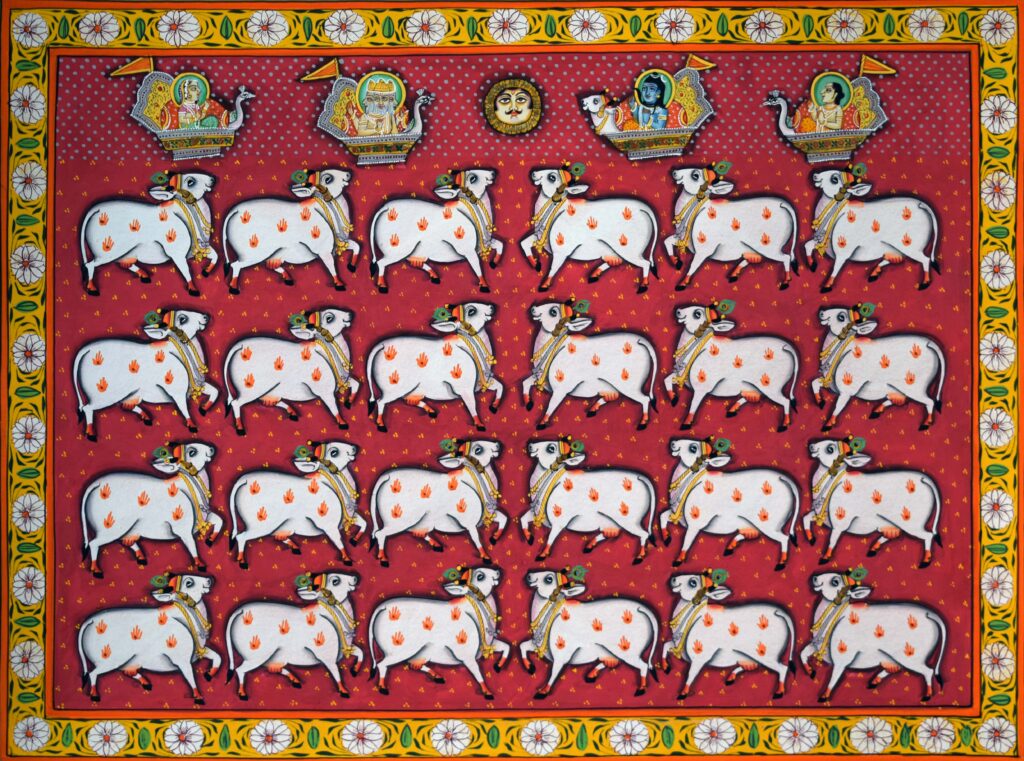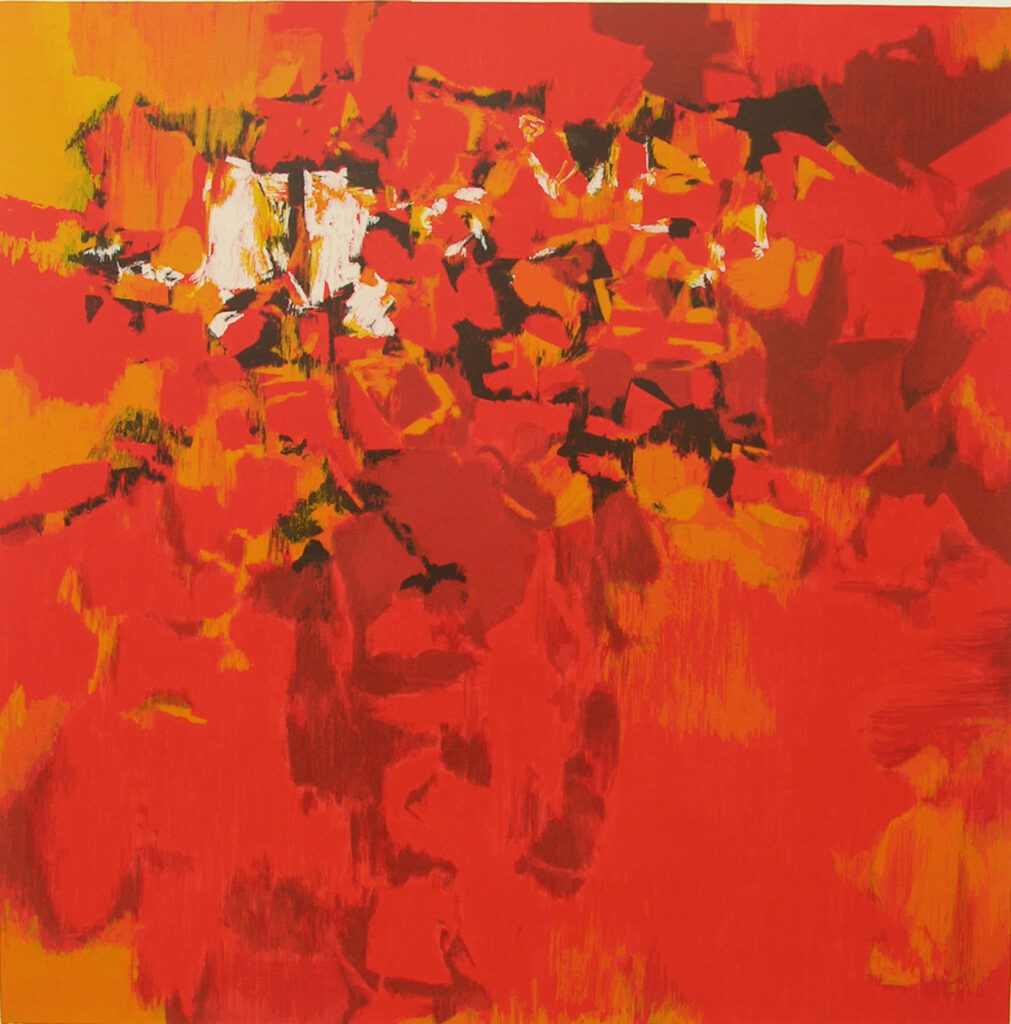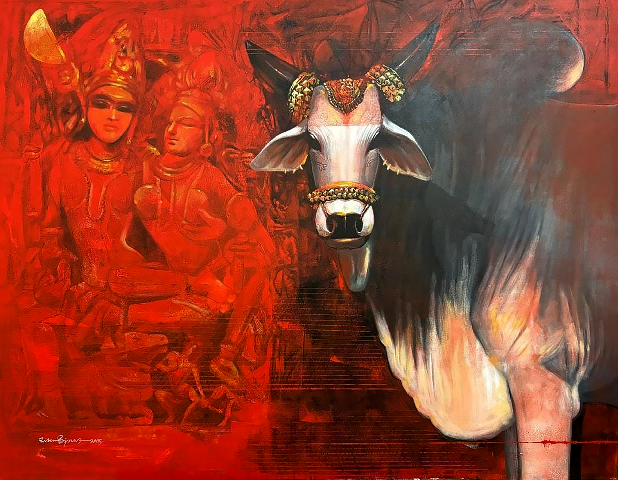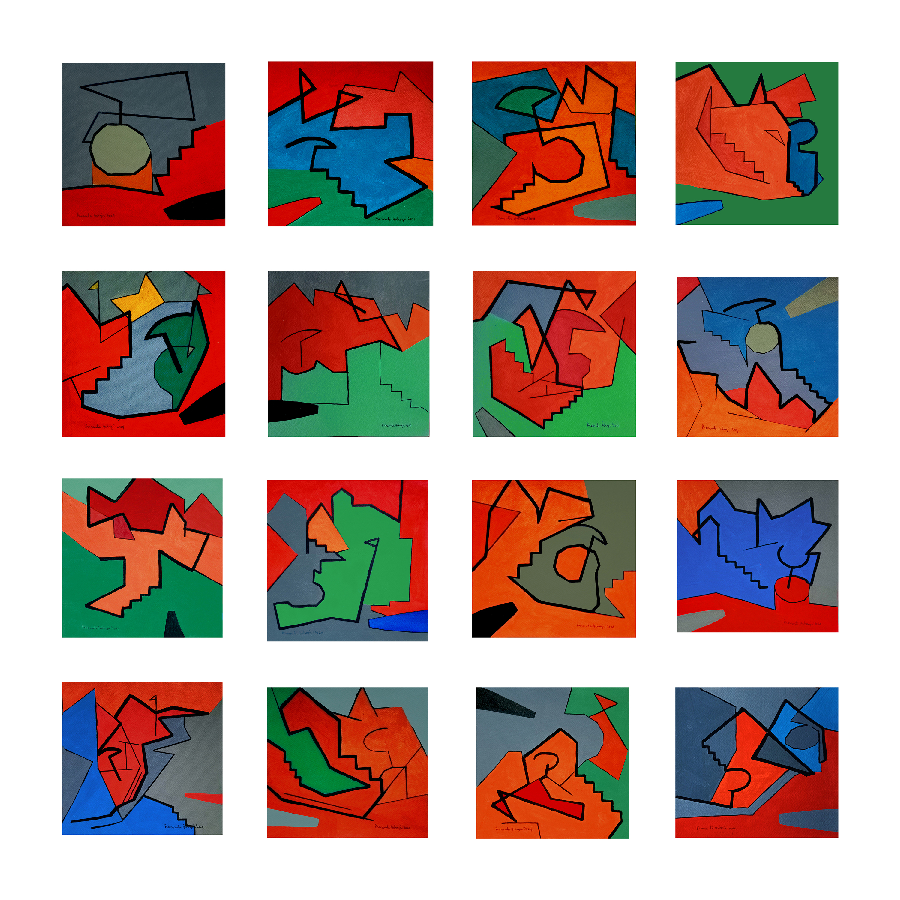Few colours possess the depth, symbolism, and cultural resonance of red in Indian art. It’s more than a colour—red is an emotion, a statement, and a bridge between the tangible and the divine. From ancient frescoes to contemporary installations, red has been a cornerstone in Indian artistry, carrying a spectrum of meanings that range from love and fertility to power and spirituality. Its pervasive presence across art forms profoundly influences India’s cultural and aesthetic identity. Let’s dive into the vibrant journey of red—from its traditional roots to its bold reinvention in the modern era.
Red in Traditional Indian Art
In traditional Indian art, red is far from a mere visual element. It embodies deep-seated cultural and spiritual meanings, breathing life and emotion into artistic creations. Artists have historically used red for its aesthetic appeal and as a powerful medium to narrate stories, evoke emotions, and symbolize divine energy.

Miniature Paintings
Indian miniature paintings are celebrated for their intricate detailing and vivid colour palettes. Among these, red often takes center stage, highlighting key elements and intensifying emotional resonance. In Mughal, Rajasthani, and Pahari miniature paintings, red is frequently used to depict valour, passion, and divine energy.
Consider the depictions of Durga or Kali—deities often adorned with red attire or surrounded by fiery red backdrops. These colours amplify their ferocity and divine power, creating a visceral impact on viewers. Durga, the warrior goddess, clad in red, radiates strength and protection, while Kali’s fiery hues underline her transformative energy. Similarly, red in miniature battle scenes underscores bravery and intensity, making it impossible to overlook its significance in this intricate art form. The meticulous use of red elevates the narrative, drawing viewers into a world where each shade speaks of valour, love, or divine intervention.
Folk Art Traditions
Folk art forms across India are steeped in red, each weaving its tale. Take Madhubani art from Bihar, for instance. Red in Madhubani paintings is more than a pigment; it symbolizes auspiciousness, marital bliss, and fertility. It’s often paired with blooming flower motifs, lush forests, or divine unions, enriching the visual and cultural narrative. The stark contrast of red against natural tones creates an earthy yet celebratory aesthetic, reflecting the rhythms of rural life.
Pattachitra, the scroll-based art form from Odisha, also embraces red. Here, red backgrounds serve as vibrant stages for mythological tales featuring gods, demons, and celestial beings. This use of red does more than draw the eye; it acts as an emotional undercurrent, amplifying the drama and divinity of the narratives. Scenes of Krishna’s playful exploits or the cosmic dance of Shiva are brought to life through the dynamic interplay of red with other hues, making the art form a living testament to India’s storytelling traditions.
Red in Contemporary Indian Art
As Indian art evolved, so did the use of red. Contemporary artists continue to embrace this colour but with new interpretations that blend tradition with modernity. They use red as a tool to explore, challenge, and redefine themes that resonate with today’s audiences.
Artists like S H Raza have transformed red into a profound symbol within modern Indian art. Raza’s abstract compositions, particularly his later works, employ red as an elemental force—representing energy, warmth, and the vibrancy of life itself. In his Bindu series, red becomes a pulsating centre, embodying cosmic energy, spiritual focus, and the dynamism of existence. His deep engagement with geometric forms allows red to function as both a structural and emotional anchor, intensifying the meditative quality of his art.

In works such as the lithograph above, red dominates the composition, layered with contrasting colours that evoke a sense of rhythm and movement. The structured repetition of forms, reminiscent of traditional Indian mandalas, gives red a ceremonial presence, both grounding and expansive. Raza’s exploration of red is never static; it is alive, breathing with the essence of nature, memory, and transcendence.
Jiban Biswas’s use of red in his artwork serves as a powerful medium to bridge cultural heritage with contemporary expression. Red, deeply embedded in Indian tradition, symbolizes spirituality, devotion, and vitality. In his Emotional Attachment series, red plays a crucial role in depicting the intricate relationship between religious masks, cows, and the divine connection between Lord Shiva and Nandi (the bull). The colour red, in this context, not only enhances the emotional depth of his paintings but also signifies the intensity of faith, passion, and transformation. Through his exploration of red, Biswas harmonizes human figures with animals, invoking a spiritual realism that resonates with both traditional and modern audiences.

Jiban Biswas
Prasanta Acharjee
Prasanta Acharjee’s striking and deliberate use of red serves as a powerful focal point in his compositions. Whether portraying circus elephants or musicians, red dominates the canvas, heightening the energy, rhythm, and movement within his works. In his Circus series, red contrasts with vibrant hues, emphasizing the grandeur and spectacle of performance art. Similarly, in his paintings of musicians, particularly jazz players, red pulsates through the minimalist, abstract forms, evoking the soul and intensity of music. This bold use of colour not only enhances visual impact but also immerses viewers in the dynamic interplay of form, sound, and emotion.

The Evolution of Red in Indian Art
The story of red in Indian art is a testament to its adaptability. As the world becomes more interconnected, Indian artists have found innovative ways to reimagine red while staying true to its roots.
Global Influence and Fusion
Indian art has increasingly embraced global influences, and red is a universal language. The colour’s association with passion, power, and life transcends cultural boundaries, allowing Indian artists to collaborate and experiment internationally. This fusion of Eastern symbolism and Western techniques has led to groundbreaking works that resonate globally. Whether it’s a digital mural or an avant-garde fashion collection, red continues to bridge cultures, creating a rich tapestry of ideas and expressions.
Conclusion
The power of red in Indian art is as enduring as it is transformative. From traditional Madhubani paintings’ intricate patterns to contemporary canvases’ bold strokes, red has always been more than a pigment. It symbolizes India’s cultural richness, spiritual depth, and artistic innovation.
As we move further into the 21st century, the legacy of red continues to evolve. It inspires artists to honor their heritage while pushing creative boundaries, ensuring that this vibrant hue remains a cornerstone of Indian artistry for generations. Whether you’re admiring a centuries-old Pattachitra or a cutting-edge digital installation, red speaks to the soul, reminding us of the passion, power, and beauty that define Indian art.